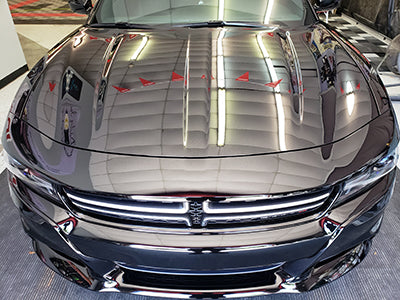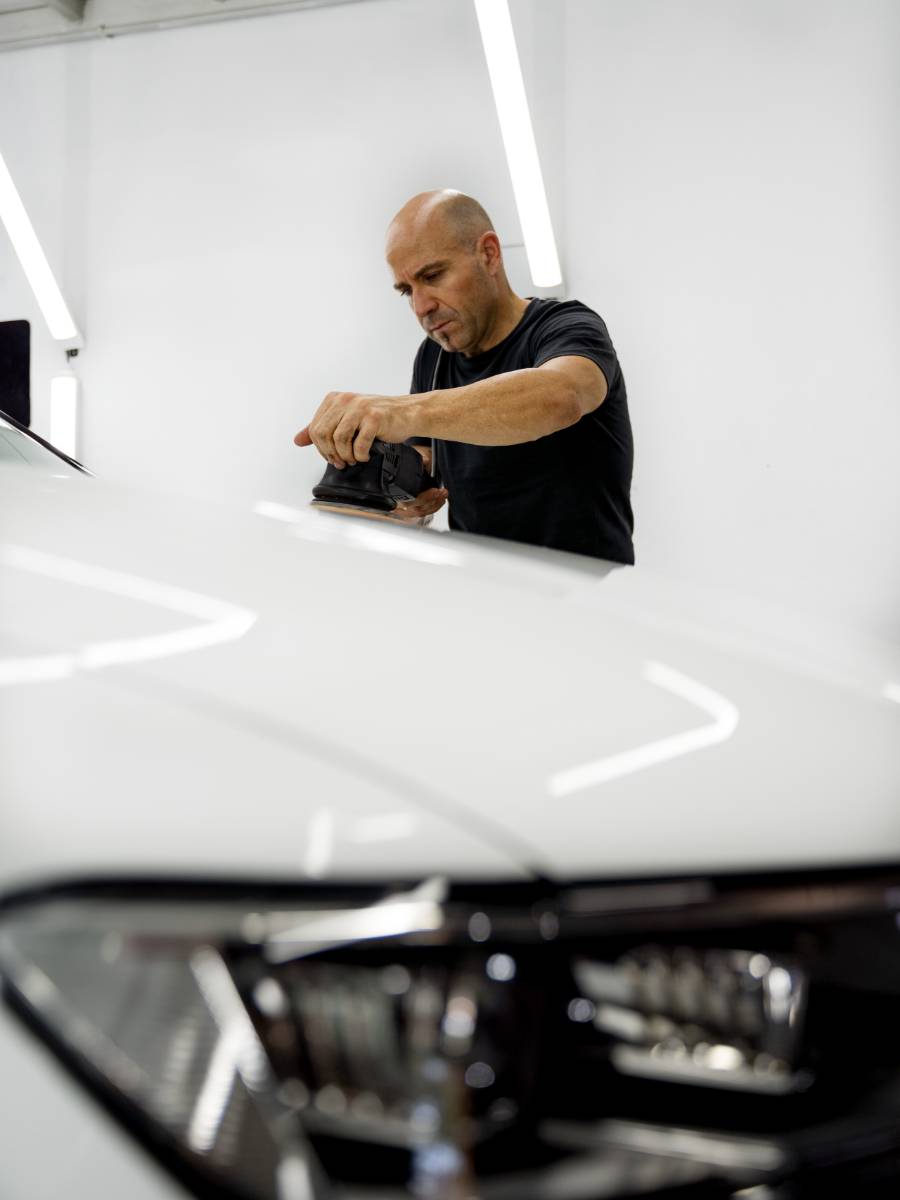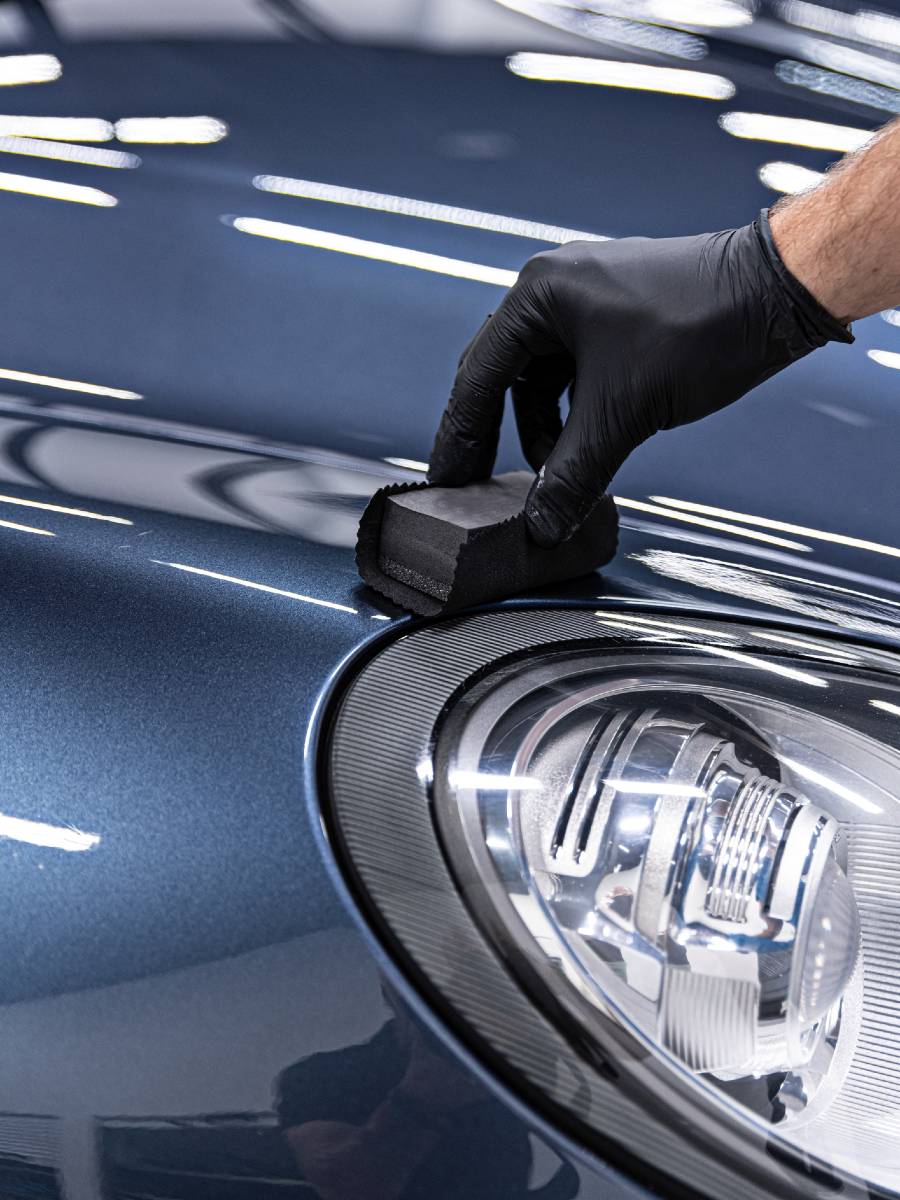How Ceramic Coating Enhances Your Vehicle's Protection and Appearance
How Ceramic Coating Enhances Your Vehicle's Protection and Appearance
Blog Article
Ceramic Coating vs. Conventional Wax: Which Provides Much Better Long-Term Security?
The argument between ceramic finishes and standard wax for lorry protection has actually garnered considerable focus among auto lovers and professionals alike. Ceramic layers flaunt premium durability and resistance to environmental factors, yet the complexity of their application increases inquiries regarding accessibility and practicality.
Summary of Ceramic Coating
Ceramic finishing has actually gotten considerable appeal among automotive fanatics and detailers alike as a result of its advanced protective high qualities. This cutting-edge technology is created to create a resilient, hydrophobic guard over an automobile's paint surface area, considerably improving its resistance to environmental impurities such as dust, UV rays, and chemical spots. Unlike conventional wax, which provides a short-lived layer of protection, ceramic layers bond at a molecular level with the paint, providing long-lasting resilience-- typically extending beyond two years with appropriate upkeep.
The application procedure includes precise preparation of the vehicle's surface area, consisting of cleaning and polishing to make certain optimum bond. When used, the coating remedies to develop a robust layer that not only adds depth and gloss to the paint however also streamlines maintenance. With its hydrophobic buildings, ceramic coating allows water and dust to slide off even more conveniently, minimizing the regularity of laundries and lessening the threat of swirl marks.
In addition, ceramic finishings are offered in different formulations, enabling customers to select items customized to their details needs and choices. Generally, ceramic layer stands for a considerable development in paint protection modern technology, providing premium efficiency contrasted to standard choices.
Overview of Conventional Wax
Commonly regarded as a staple in automotive treatment, wax offers as a preferred option for those seeking an uncomplicated technique to improve and safeguard their lorry's paint - ceramic coating. Automotive wax typically comprises all-natural ingredients, such as carnauba, or synthetic substances, created to develop a protective layer externally of the paint. This layer not just boosts the car's gloss and beam but also gives an obstacle versus ecological pollutants
The application of wax is usually user-friendly, making it accessible for both professionals and Do it yourself fanatics. As soon as used, wax requires a healing duration, after which it sets to develop a protective shell.
However, while wax works for boosting the visual allure of an automobile, it is essential to note that the defense it offers might require extra frequent reapplication contrasted to alternative products, such as ceramic coverings. Overall, conventional wax remains a favored alternative for those focusing on simplicity of use and prompt visual enhancement.
Durability and Long Life Contrast
While both ceramic finishes and traditional wax offer protective benefits for automobile paint, their toughness and long life vary significantly. Standard wax, generally made from all-natural carnauba or artificial polymers, normally supplies a safety layer that lasts around three to six months. This reasonably brief life-span necessitates regular reapplication to maintain optimal defense.
On the other hand, ceramic coverings are crafted from sophisticated nanotechnology, developing a covalent bond with the paint surface area. This causes a robust, hydrophobic layer that can endure for 2 to 5 years, depending upon the item and ecological problems. The remarkable resilience of ceramic coverings is credited to their chemical framework, which offers enhanced resistance to scratches, UV rays, and oxidation.

Protection Against Ecological Aspects
Safeguarding a lorry's paint from ecological factors is vital for keeping its appearance and value in time. Vehicles are constantly revealed to a selection of aspects, including UV rays, bird droppings, tree sap, acid rainfall, and road grime, all of which can compromise the integrity of the paintwork.
Ceramic finishes provide a robust protection versus these ecological assailants. Unlike traditional wax, which can break down quickly under UV direct exposure, ceramic finishes create a durable, hydrophobic layer that withstands the hazardous impacts of sunlight and toxic wastes. This innovative modern technology creates a chemical bond with the automobile's surface, supplying premium security that lasts for several years, even in harsh problems.
In contrast, ceramic finishes keep their safety top qualities longer, substantially lowering the danger of paint damage and making certain that the car preserves its aesthetic allure. As a result, ceramic coverings are increasingly recognized as the remarkable option for long-lasting defense versus ecological elements.
Application and Upkeep Differences
The techniques of application and subsequent upkeep for ceramic finishings and traditional wax vary significantly, influencing the overall user experience and performance of each item. Ceramic finishes require an even more complex application process, typically including surface preparation that includes cleaning, sanitizing, and polishing the automobile. As soon as the surface area is prepared, the ceramic finishing is used in a controlled atmosphere, often needing specialist knowledge to make sure correct curing and bonding to the paint.

While both products boost lorry look, the longer-lasting security supplied by ceramic finishes may justify their initial financial investment, in spite of the even more requiring application procedure. Alternatively, conventional wax Read Full Article stays a popular selection for those looking for a less complex, albeit short-term, option.

Verdict
To conclude, ceramic coatings show significant advantages over typical wax in terms of resilience and environmental management. With a lifespan expanding two to 5 years and premium resistance to UV rays, dirt, and chemical spots, ceramic finishings provide an extra effective service for lasting car maintenance. Although the application procedure might require professional proficiency, the resulting expense financial savings and minimized regularity of reapplication highlight the worth of ceramic finishings for those looking for ideal car protection.
The debate between ceramic finishes and conventional wax for automobile defense has garnered significant focus amongst auto lovers and experts alike. Unlike typical wax, which supplies a temporary layer of security, ceramic finishings bond at a molecular degree with the paint, supplying resilient sturdiness-- often prolonging past 2 years with proper upkeep.
While both ceramic finishings and typical wax deal safety benefits for automobile paint, their resilience and longevity vary considerably. For automobile lovers looking for long-lasting security, ceramic layers provide an engaging advantage over typical wax products.
In final thought, ceramic coverings show substantial advantages over traditional wax in terms of durability and ecological security.
Report this page